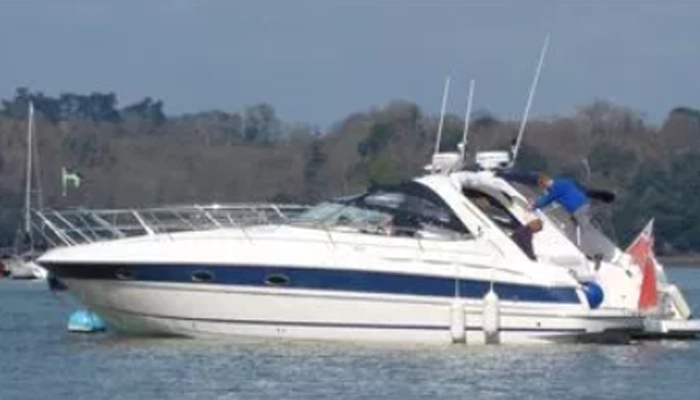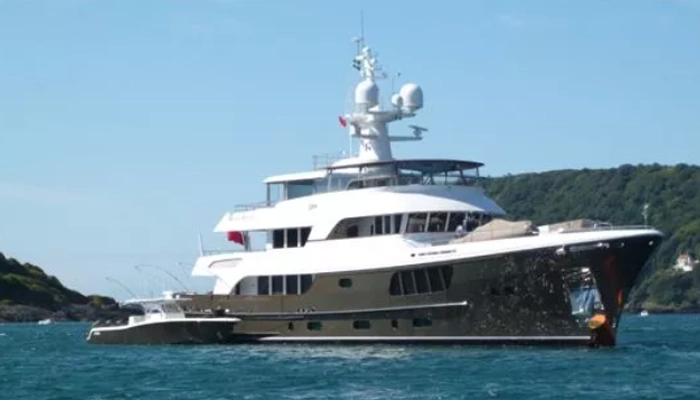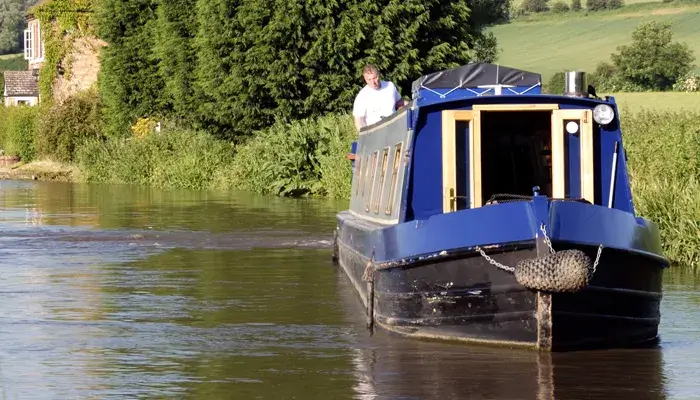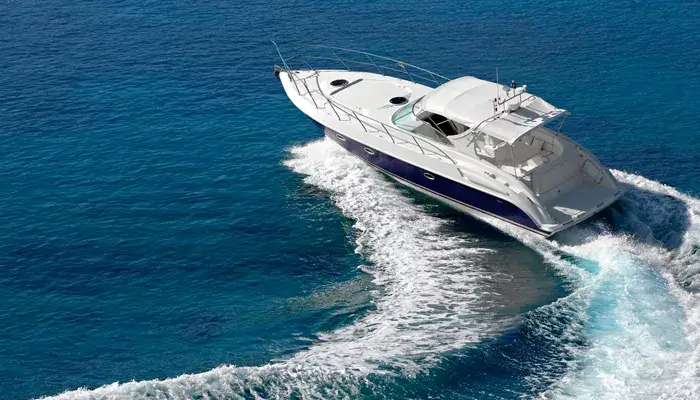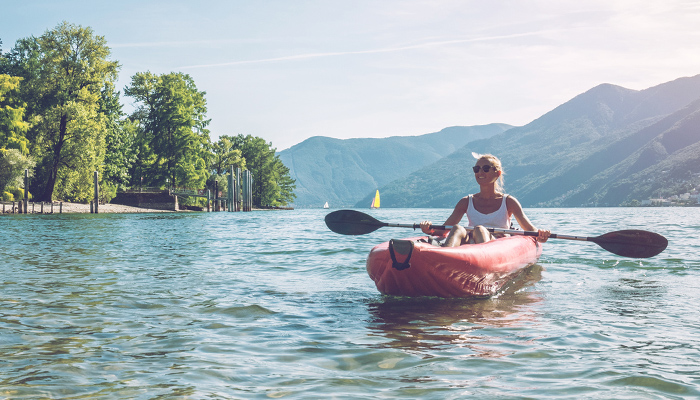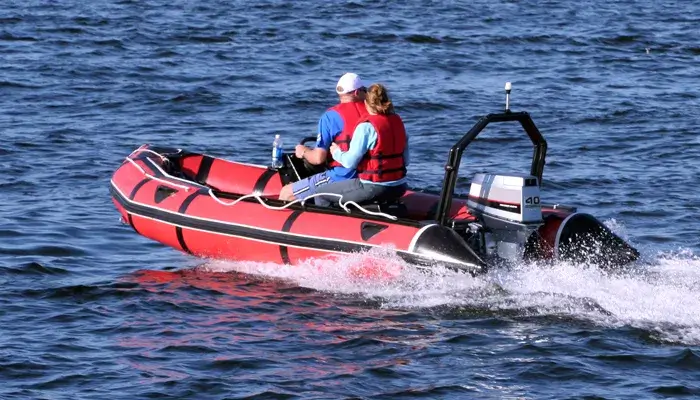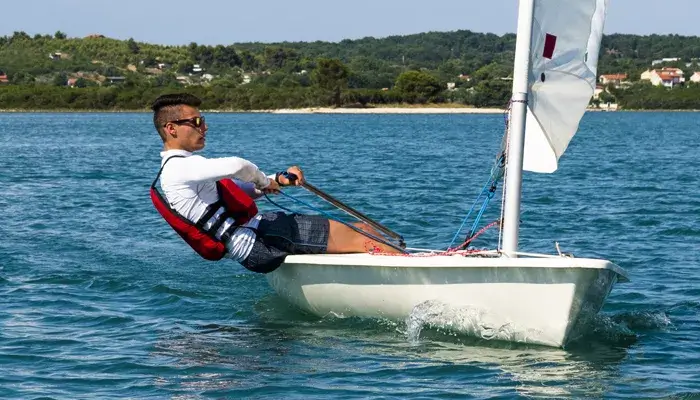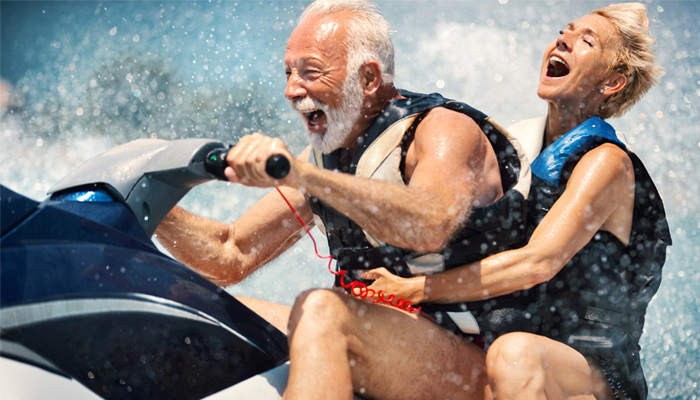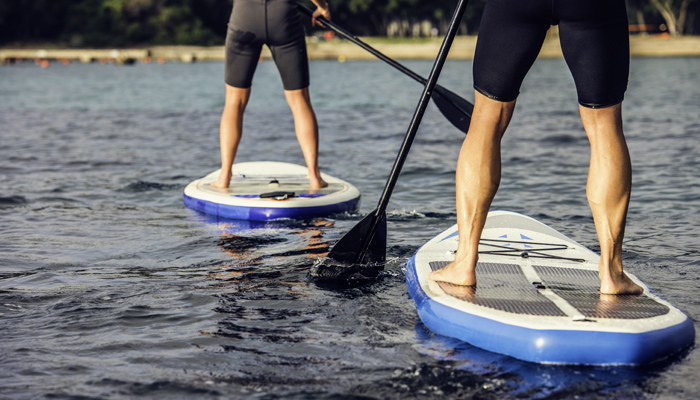Motor Cruiser Owner’s Guide
Our motor cruiser owner’s guide will help you get to know your new motor cruiser. Read guidance on training, preparing your boat, advanced driving techniques, preparing for longer trips and coping with heavy weather, plus a checklist for when out at sea.
Preparation for sailing a motorboat
All skippers should have a sound understanding of boat handling, navigation and meteorology. If you've purchased a motor cruiser only you will know if you need to improve your skills or brush up on your navigation before venturing out to sea. Take it step by step and have as much fun as possible as you build up your skills.
Here are just a few examples of elementary questions you should be able to answer in the early stages:
- Can I perform an engine check?
- Can I spot a potential engine problem before it is too late?
- Can I prepare a passage plan for a day trip?
- Can I plot a course to my next port of call?
- Can I manoeuvre my boat out of a crowded marina with a strong tide running?
- Do I know the meanings of all the channel markers?
- What does a North Cardinal mark look like and what does it mean?
- What is the significance of a buoy with a yellow light?
- Do I have to give way to a sailing boat on a port tack?
- Do I have a VHF short range certificate (SRC)?
- What channel should I be monitoring for the Coastguard?
- Do I know how to convert a magnetic compass course to true?
- Can I plot an estimated position if my GPS fails?
- Do I know how to read a pressure chart?
- How much chain will I to need to let out when anchoring in 5m of depth?
- If a crew member falls seriously ill when I am out at sea, what do I do?
How to avoid potential risks
Boating, like most pastimes, will see you building your skills and experience over time. If you are aware of your limitations then you can plan accordingly and avoid many potential risks.
One of the best ways to reduce risk at sea is to be properly trained. There is a range of Royal Yachting Association (RYA) motor cruiser and motor cruiser training courses that will help get you started and enable you to build on your experience all the way from handling small, single-engine motor cruisers to large twin-engine motor cruisers.
The RYA training scheme
RYA Powerboating courses are designed for operating small powerboats such as RIBs and sports boats. The courses Level 1 which is basic boat handling, through Level 2, Intermediate and Advanced, at which stage you will be able to drive by day and night in unfamiliar waters in demanding conditions.
RYA Motor Cruising courses are designed for both novices and more experienced skippers looking to improve their skills. The training is usually done on large twin-engine, live-aboard motor cruisers and progresses through three main stages - Helmsman, Day Skipper and Coastal Skipper.
VHF radio short range certificate (SRC)
Anyone who operates a VHF radio is required by law to have a short-range certificate (SRC). The RYA administers one-day courses which includes a practical and written exam. The course covers radio operation, use of frequencies and channels, emergency procedures, digital selective calling (DSC), global maritime distress and safety system (GMDSS), emergency position indicating radio beacons (EPIRB) and Search and Rescue (SART).
Sailing preparation checklists
Many skippers use checklists to help prepare for a trip to sea. Having several checklists aboard your boat is a good idea to ensure that nothing has been forgotten, both before departure and when you leave the boat after a trip. See the following checklists for a typical day trip, for illustration purposes:
-
Passage planning – check tide tables, mark waypoints on proposed route, courses to steer, weather forecasts, make notes of VHF frequencies, study proposed destination if applicable, prepare log book, notify someone ashore of your planned departure time and phone in after reaching destination.
-
Documentation – always carry a copy of your insurance, vessel registration, VHF licence, engine and equipment manuals.
-
Weather – check and download local forecasts for the duration of your trip, use forecasts and tidal stream atlases to estimate sea state along your route.
-
Engine – check water levels, coolant, oil levels, raw water filters, seacocks are open, any signs of leaks, drive belts, stern glands are greased, battery switches in correct position.
-
Spares and tools – keep spare oils, filters, gaskets, impellers, hoses, belts and tools to fit them.
-
Fuel management – check fuel tank levels, calculate range available leaving 20% reserve, reserve tanks are full, check consumption per mile en route.
-
Instruments – check all instruments are working properly.
-
Safety briefing – moving around deck, handholds, galley safety, gas precautions, fire prevention, fire extinguishers, lifejackets, life ring, MOB equipment, flares, first aid kit, crew welfare and clothing.
-
Preparing for sea – radar on, chart plotter on, VHF on, set to harbour frequency, carry portable VHF radio back up, engines running, steering working smoothly, loose equipment stowed, portholes and hatches shut, mooring lines and fenders stowed after casting off.
-
Returning ashore – check loose deck equipment is stowed below, secure hatches and portholes, switch off batteries, stow valuables, close seacocks, mooring lines and fenders.
Sailing a motor cruiser at speed
Driving at speed is enormous fun but it requires quick responses at the helm and is potentially much more dangerous, not only for you and your crew but for others out on the water. Wave patterns can quickly change resulting in a very bumpy ride if the driver is not reacting well to the conditions. Objects such as lobster pots and marker buoys come up very quickly and some are not easy to see, especially if you are heading into the sun. Remember to keep well clear of other boats, especially smaller ones.
If you are speeding down a crowded stretch of water such as the Solent, look out for yacht races, kayakers and angling boats - give them all a wide berth as your wake will be spreading out over a considerable distance.
Top tips include:
- Keep a constant look out, including well ahead to check wave patterns and wash from other vessels.
- Remember the Collision Regulations.
- Respect other vessels and give them a wide berth.
- Make sure the crew are holding on and not moving around the boat.
Coping with waves
At speed, waves approach quickly and the driver must anticipate and react to waves without hesitation. Every now and again you can suddenly find yourself up against a big wave and you have to react very quickly in order to stay in control, coping not only with the higher crest, but also the deeper trough. This is where the throttle and trim need to be adjusted quickly and smoothly. It is going to be more comfortable and less stressful if you are not travelling right on the edge for the conditions.
Keeping a speed safety margin will allow the boat to cope with the larger waves without having to drastically reduce speed, making for a smoother ride. It is also important to keep looking well ahead so that if a freak wave does approach you will have time to adjust. The challenge is to be able to make just the right amount of throttle adjustments to keep the boat planning and to steer into the waves with the boat set at the ideal attitude and angle. This is where the angle of trim needs to be finely adjusted to keep the boat well balanced.
Adjusting trim
The way you trim your motor cruiser will vary with the design of the hull, the load, your speed and the sea state. There are two ways to adjust trim - by using power trim (which adjusts the angle of the propeller) or by trim tabs (which act like flaps on an airplane). A boat can be trimmed by raising or lowering the bow and, if fitted with trim tabs, from side to side. As well as making for a more comfortable ride, a properly trimmed boat will be more fuel efficient when planning.
Power trim tips
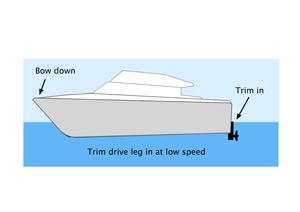
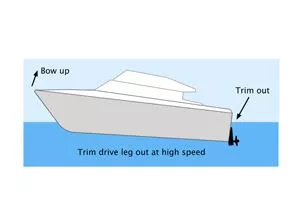
- Trim the drive leg in at slow speed.
- Trim the drive leg out when planning.
- As speed build up, trim the leg further out.
- If the leg is too far out the prop will break the surface and the boat loses speed - adjust back in a little.
- If the boat bounces up and down, adjust the trim in until the boat runs more smoothly.
- Trim the leg in a little in rougher seas.
- Trim the leg in when making sharp turns.
- Trim the leg in when slowing down and coming off the plane.
Trim tabs tips
-
Trim the tabs down together to lower the bow and raise the stern.
- Trim the tabs up together to raise the bow and lower the stern
- Trim the tabs down together into a head sea to stop the bow lifting too much over the waves.
- Trim the tabs up together in a following sea to stop the bow burying itself as the stern is lifted.
- Trim the tabs individually to adjust the transverse trim of the boat - useful if the weight of the boat is unevenly loaded or in a beam sea.
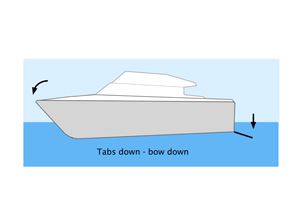
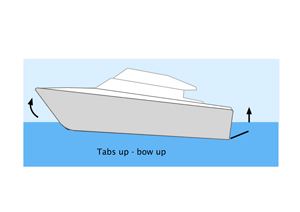
It is a good idea to practice this part of driving as much as possible, so that you instinctively know at what point you should be making adjustments. Much is going to depend on your knowledge of your own boat and what works best for different conditions. A good excuse to get out there and have some fun!
Sailing further out to sea
As you get to know your boat and your handling skills improve you might decide it is time to head out on a major coastal passage well away from your home port. To check if you are ready for this, ask yourself a few questions:
- Can I control my boat confidently at fast planning speeds of at least 20 knots?
- Have I completed my Day Skipper theory and practical courses?
- Do I have a VHF SRC?
- Are my navigation skills and chart work up to the level of Coastal Skipper / RYA Yachtmaster level?
- Could I navigate if my electronics failed?
- How are my weather forecasting skills?
- Can I read a pressure chart confidently?
- How would I cope with an emergency situation?
- Do I have a first aid certificate?
Preparing your motor cruiser
Preparing in advance for a long coastal passage is crucial for cruising, and should include:
- Boat checks – state of maintenance; are all onboard systems functioning; charts; inventory; provisioning.
- Passage planning – duration, weather information, tides, distances, navigation strategy, boat speed, ports of call, alternative ports.
- Crew – experience, skills and abilities, assigning responsibilities, watch keeping, health.
- Safety and emergency drills
Sailing in heavy weather
Heavy weather takes time to arrive and it can normally be avoided by keeping an eye on the weather forecasts and changing your plans accordingly, either by diverting from your planned route or by delaying your departure time. However, as you venture further afield it is possible that one day you will find yourself caught out.
Here are some tips on what to do if heavy weather is approaching faster than anticipated:
-
Talk to the crew and stress the importance of personal safety, especially when moving around the boat in rough weather.
-
Explain to the crew where the centre of the storm is located, the direction it is moving in and how far away it is.
-
Ensure all crew are wearing lifejackets.
-
Crew moving around on deck should wear safety harnesses.
-
Keep a constant lookout as visibility decreases.
-
Monitor VHF channel 16, weather forecasts and the ship’s barometer.
-
Make sure all hatches and port holes are secure.
-
Secure all loose gear above and below decks, especially in the galley area.
-
Pump the bilges regularly.
-
Prepare emergency equipment, including a sea anchor if conditions deteriorate rapidly.
-
Head for sheltered waters if you are not already doing so.
Sailing your motor cruiser safely
Getting to know a large motor cruiser takes time and there is a lot to learn. Be prepared to spend as much time as it takes to master berthing techniques in windy conditions and get used to manoeuvring in and out of crowded marinas. Practise ‘man overboard’ drills and anchoring techniques with your crew.
As a skipper the decision to go to sea is always yours and it is up to you to decide if your boat and crew are ready for the trip. With the right attitude and experience there will be less chance of finding yourself in a potentially risky situation at sea.
In summary
- If you have limited boating experience, personal skill advancement is critical. Research the RYA training scheme and book yourself onto a RYA motor cruising course for your skill level.
- If you don’t hold a VHF licence, also book an RYA VHF radio course (SRC).
- In the early stages, plan a number of short day trips rather than a major cruise.
- Use checklists to ensure that you are well prepared and avoid potential risks.
- Practise your boat handling: get out on the water as much as possible and have fun practicing your skills.
- Make safety your top priority at sea.
Motorboat insurance from Towergate
We can offer cover for motorboats and speed boats on and off the water.
Get a motorboat insurance quote online or call us on 0344 892 1987.
About the author
Adam Summersby is a respected leader with 11 years’ varied experience in niche personal and commercial lines insurance, including caravan, site operators and excess reimbursement, with proficiency in leadership, sales and account management.
Date: October 30, 2018
Category: Boat





